Courtesy Photo: CBS via Getty Images
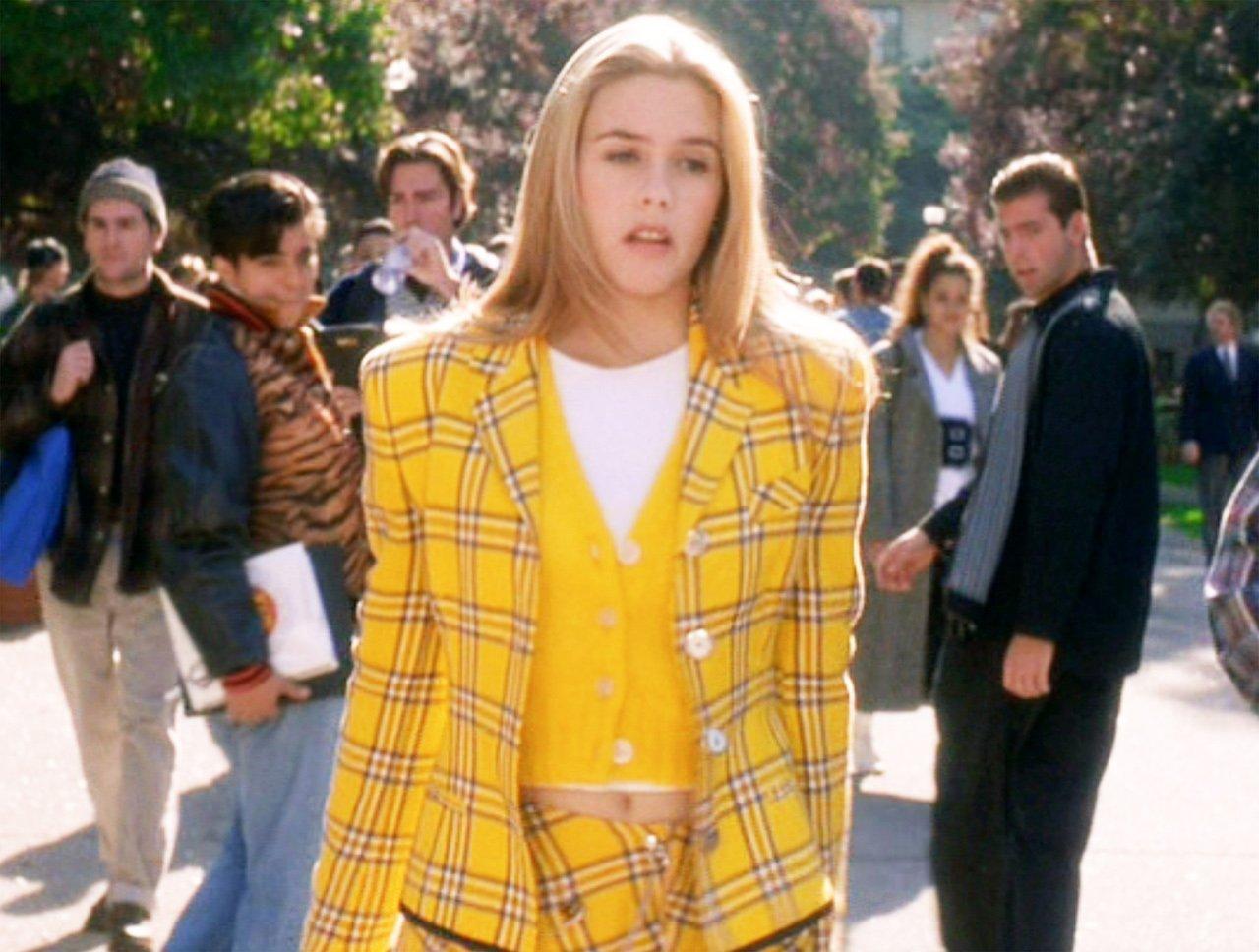
Alicia Silverstone as Cher Horowitz in 'Clueless' (1995)
news
How 1995 Became A Blockbuster Year For Movie Soundtracks
From 'Clueless' to 'Dangerous Minds,' soundtracks were big business in 1995, but the year's hits offered no clear formula for success
Mariah Carey, Alanis Morissette, 2Pac and The Smashing Pumpkins all had No. 1 albums in 1995. Despite such hallowed competition, four movie soundtracks also topped the Billboard 200 chart that year. Two were family-friendly Disney behemoths: Pocahontas and The Lion King, the latter still powering from the previous year. The other chart-topping soundtracks, for the Michelle Pfeiffer vehicle Dangerous Minds and the stoner comedy Friday, were no one's idea of kids' entertainment.
Beyond those No. 1 spots, 1995 marked a fascinating midpoint in a soundtrack-heavy decade. According to a New York Times report, a new release CD that year typically cost anywhere between $13-$19. At that price, a soundtrack needed major star power or an undeniable concept.
For movie studios and musicians alike, the format was rich with opportunity. However, there was no certain formula for success. Some soundtracks were guided by a single producer, while others drew on a grab bag of then-current songs. Several featured one clear hit that eclipsed the soundtrack, or occasionally the movie itself. For all their differing approaches, the soundtracks of 1995 epitomized the energy and audacity of the decade, while also establishing tropes for the next 25 years.
<style>.embed-container { position: relative; padding-bottom: 56.25%; height: 0; overflow: hidden; max-width: 100%; } .embed-container iframe, .embed-container object, .embed-container embed { position: absolute; top: 0; left: 0; width: 100%; height: 100%; }</style><div class='embed-container'><iframe src='https://www.youtube.com/embed//3JWTaaS7LdU' frameborder='0' allowfullscreen></iframe></div>
The Bodyguard: Original Soundtrack Album (1992) set the bar high for the decade. With a 20-week reign at No. 1, it remains the biggest-selling soundtrack of all time. Whitney Houston performed six songs on the album, including the titanic power ballad, "I Will Always Love You." (At the 1994 GRAMMYs, the track won the GRAMMY for Record Of The Year and Best Pop Vocal Performance, Female, while the soundtrack itself earned the Album Of The Year award.)
While The Bodyguard magnified their commercial potential, movie soundtracks like Quentin Tarantino's Reservoir Dogs (1992) and Pulp Fiction (1994) framed the medium as an artistic showpiece. Throughout the '90s, Tarantino and fellow indie auteurs Paul Thomas Anderson, Richard Linklater and Spike Lee made music a key character in their films. (The latter continues the trend on his latest movie, Da 5 Bloods, alongside six-time GRAMMY-winning composer and trumpeter Terence Blanchard.) Both instincts, for commercial returns and artistic validation, were well-represented in 1995.
Read: 'The Bodyguard' Soundtrack: 25 Years After Whitney Houston's Masterpiece
Batman Forever (1995) epitomized the big-budget, mass-appeal mid-'90s soundtrack. Spanning PJ Harvey to Method Man, the 14-track set employed some tried-and-true tactics. First, only five songs on the track list appear in the movie itself, ushering in a rash of "Music From And Inspired By" soundtracks. Second, its featured artists largely contributed songs you couldn't find on other albums: According to Entertainment Weekly in 1995, U2 landed a reported $500,000 advance for "Hold Me, Thrill Me, Kiss Me, Kill Me," an offcut from the band's Zooropa album sessions.
Most significantly, Batman Forever backed a surprise smash in Seal's "Kiss From A Rose." Originally released as a single in 1994, the ballad blew up as the movie's "love theme." In its music video, Seal croons in the light of the Bat-Signal, intercut with not-very-romantic scenes from the film. Outshining U2, "Kiss From A Rose" reached No. 1 in 1995; one year later, the song won for Song Of The Year, Record Of The Year and Best Male Pop Vocal Performance at the 38th GRAMMY Awards.
<style>.embed-container { position: relative; padding-bottom: 56.25%; height: 0; overflow: hidden; max-width: 100%; } .embed-container iframe, .embed-container object, .embed-container embed { position: absolute; top: 0; left: 0; width: 100%; height: 100%; }</style><div class='embed-container'><iframe src='https://www.youtube.com/embed//AMD2TwRvuoU' frameborder='0' allowfullscreen></iframe></div>
Both Bad Boys and Dangerous Minds had their "Kiss From A Rose" equivalent in 1995. Diana King's reggae-fusion jam "Shy Guy" proved the breakout star of Bad Boys, transcending an R&B- and hip-hop-heavy soundtrack. Meanwhile, Coolio's "Gangsta's Paradise," featuring singer L.V., the key track on Dangerous Minds, became the top-selling single of 1995; it won the rapper his first, and only, GRAMMY for Best Rap Solo Performance the next year.
Other soundtracks from 1995 endure as perfect documents of their time and place. Clueless compiled a cast from '90s rock radio to accompany the adventures of Alicia Silverstone's Cher Horowitz and her high school clique: Counting Crows, Smoking Popes, Cracker and The Muffs. Coolio, the everywhere man of 1995, contributed "Rollin' With My Homies."
From the same city, but a world outside Cher's Beverly Hills bubble, came the Ice Cube- and Chris Tucker-starring Friday. Its soundtrack took a whistle-stop tour of West Coast hip-hop and G-funk via Ice Cube, Dr. Dre, Tha Alkaholiks and Mack 10. True to the era, the music video for Dr. Dre's "Keep Their Heads Ringin'" is half stoner comedy, half cheesy action movie.
<style>.embed-container { position: relative; padding-bottom: 56.25%; height: 0; overflow: hidden; max-width: 100%; } .embed-container iframe, .embed-container object, .embed-container embed { position: absolute; top: 0; left: 0; width: 100%; height: 100%; }</style><div class='embed-container'><iframe src='https://www.youtube.com/embed//1yFfQtd-A5A' frameborder='0' allowfullscreen></iframe></div>
Waiting To Exhale, the 1995 drama directed by Forest Whitaker, boasted a soundtrack with a clear author. Babyface, the R&B superproducer with 11 GRAMMY wins for his work with the likes of Boyz II Men and Toni Braxton, produced the set in full. Following Babyface's co-producer role on The Bodyguard soundtrack three years prior, Waiting To Exhale featured two new songs from the movie's star, Whitney Houston.
Read: 'Score': Soundtracks take us on an emotional ride
Houston's "Exhale (Shoop Shoop)" and "Why Does It Hurt So Bad" led a track list that also featured Aretha Franklin, TLC, Chaka Khan, Mary J. Blige and then-newcomer Brandy. A powerful showcase of Black women across generations, the soundtrack has prevailed as a standalone work, going on to receive multiple nominations, including Album Of The Year, at the 1997 GRAMMYs. In a crowded year for soundtracks, which also included Dinosaur Jr. founder Lou Barlow's work on Larry Clark's contentious Kids, Waiting To Exhale demonstrated the power of a singular vision.
For the most part, the soundtracks of 1995 tried a bit of everything. The previous year, The Crow: Original Motion Picture Soundtrack went all-in on covers, including Nine Inch Nails overhauling Joy Division's "Dead Souls." That trend continued into 1995, from Tori Amos covering R.E.M.'s "Losing My Religion" for Higher Learning to Evan Dando's update of Big Star's "The Ballad Of El Goodo" in Empire Records to Tom Jones gamely taking on Lenny Kravitz's "Are You Gonna Go My Way"' for The Jerky Boys movie. (Is there a more '90s sentence than that?)
<style>.embed-container { position: relative; padding-bottom: 56.25%; height: 0; overflow: hidden; max-width: 100%; } .embed-container iframe, .embed-container object, .embed-container embed { position: absolute; top: 0; left: 0; width: 100%; height: 100%; }</style><div class='embed-container'><iframe src='https://www.youtube.com/embed/wrTuV4Szxzo' frameborder='0' allowfullscreen></iframe></div>
Elsewhere, the Mortal Kombat soundtrack blended metal and industrial rock (Fear Factory, Gravity) with dance music (Utah Saints, Orbital). For every Dead Presidents, which zeroed in on '70s funk and soul, there was a Tank Girl, which threw together Bush, Björk, Veruca Salt and Ice-T to match the movie's manic tone.
Continuing from their '90s winning streak, grown-up soundtracks have proven surprisingly resilient. In an echo of Babyface's role on Waiting To Exhale, Kendrick Lamar oversaw production on 2018's chart-topping, multi-GRAMMY-nominated Black Panther: The Album, uniting an A-list cast under his creative direction. On the same front, Beyonce executive-produced and curated The Lion King: The Gift, the soundtrack album for the 2019 remake of the Disney classic, which spotlighted African and Afrobeats artists. In 2016, Taylor Swift and One Direction's Zayn recorded "I Don't Wanna Live Forever (Fifty Shades Darker)," pitching for the movie tie-in bump enjoyed in 1995 by Seal and Coolio. (The millennial stars stopped short of including scenes from the movie in their music video.)
Like Batman Forever back in the day, the DC Universe continues to put stock in soundtracks. Both Suicide Squad (2016) and its follow-up, Birds Of Prey (2020), are packed tight with to-the-minute pop, R&B and hip-hop. Each soundtrack reads like a who's who of the musical zeitgeist. In 1995, Mazzy Star, Brandy and U2 grouped up behind Batman. In 2016, Twenty One Pilots, Skrillex and Rick Ross powered the Suicide Squad. In 2020, everyone from Doja Cat to Halsey to YouTube star Maisie Peters form Team Harley Quinn.
As 1995 taught us time and time again, nothing traps a year in amber quite like a movie soundtrack.
How 1995 Became The Year Dance Music Albums Came Of Age
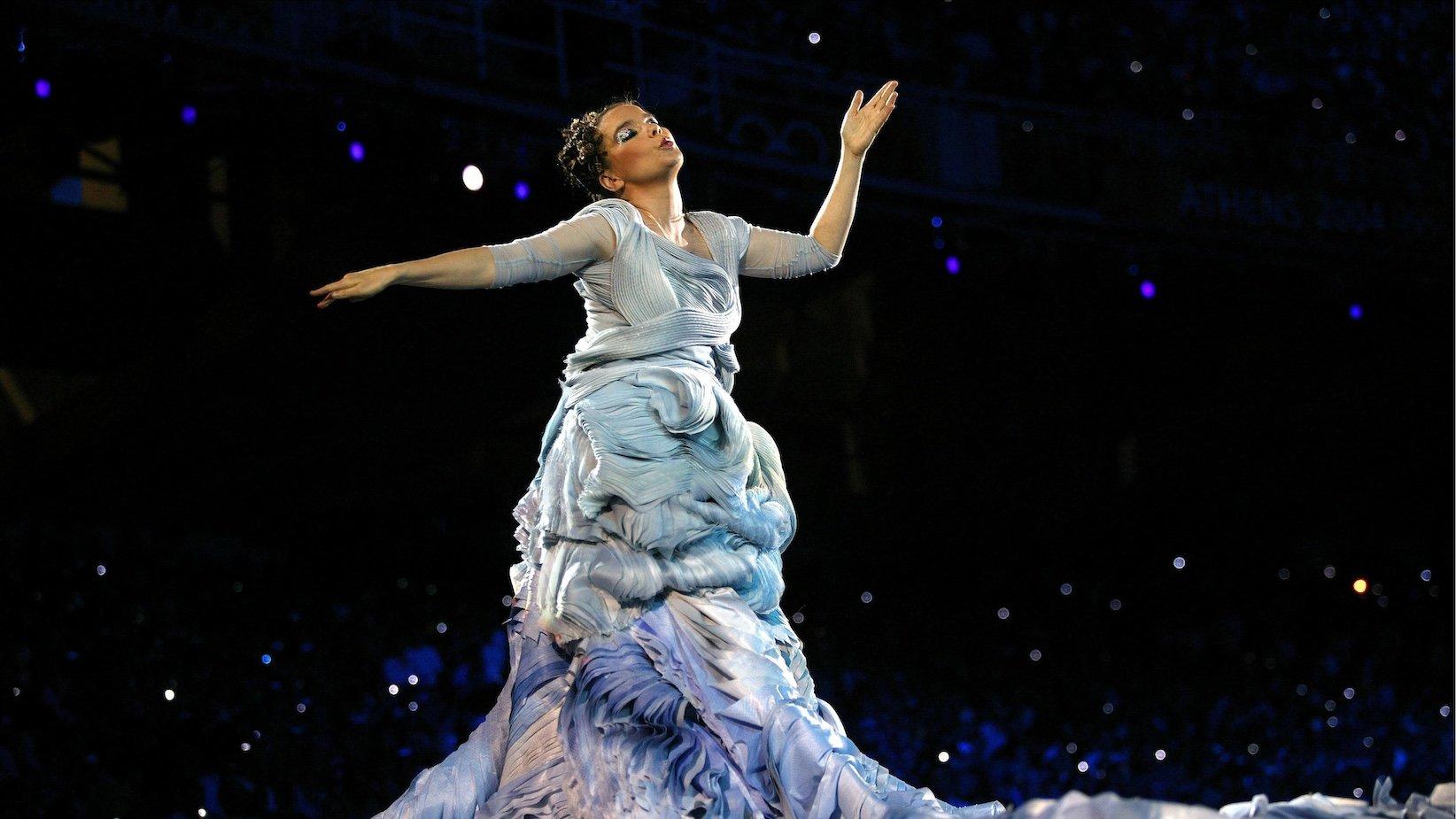
Photo: Mick Hutson/Redferns
list
When The GRAMMYs & Olympics Align: 7 Times Music's Biggest Night Met Global Sports Glory
Before the Olympic Games begin in Paris on July 26, dive into the intertwined history of gold medalists and golden gramophones.
The GRAMMY Awards and the Summer Olympics are unarguably the pinnacles of their respective fields. Indeed, most recording artists dream of making an acceptance speech for their magnum opus during the biggest night on the music industry calendar, while athletes competing in any of the Games’ 32 different disciplines are continually motivated by the lure of the podium.
But how often have the two intertwined since the first GRAMMY ceremony took place a year before Rome 1960?
Well, perhaps more than you think. Sure, the musical efforts from basketballers Shaquille O’Neal (gold at Atlanta 1996), Kobe Bryant (gold at Beijing 2008 and London 2012), and Damian Lillard (gold at Tokyo 2020) might not have registered with the Recording Academy. Likewise, those from track and field hero Carl Lewis (nine golds and one silver from four consecutive Games), light middleweight boxer Roy Jones Jr. (silver at Seoul 1988), and near-superhuman sprinter Usain Bolt (eight golds from Beijing, London, and Rio 2016).
But there are a handful of sportsmen (sadly, not yet sportswomen) who have competed for both gold medals and golden gramophones. There are also pop stars who have attempted to capture the blood, sweat, and tears of the quadrennial spectacle in musical form — whether as an official anthem, television theme, or simply a motivational tool — and been rewarded with GRAMMY recognition for their efforts.
With the Olympics’ return to Paris just around the corner (July 26-Aug.11), what better time to celebrate those occasions when the Games and the GRAMMYs align?
Gloria Estefan & Björk's Themes Pick Up GRAMMY Nods
It seems fair to say that Gloria Estefan, the Cuban hitmaker who helped to bring Latin pop to the masses, and avant-garde eccentric Björk, wouldn't appear to have much in common. They have, however, both received GRAMMY nominations in the Best Female Pop Vocal Performance category for their respective Olympics themes.
Estefan was recognized at the 1997 ceremony for "Reach," the gospel-tinged power ballad that embodied the spirit of the previous year's Atlanta Games. Iceland's finest musical export picked up a nod for "Oceania," the swooping experimental number she co-produced with Warp label founder Mark Bell which helped to soundtrack the opening ceremony of Athens 2004. And both went home empty-handed, the former losing to Toni Braxton's "Un-Break My Heart" and the latter to Norah Jones' "Sunrise."
Whitney Houston's Momentous Live Performance
The incomparable Whitney Houston might not have added to her GRAMMY haul at the 1989 ceremony — Tracy Chapman's "Fast Car" prevented her from converting her sole nod, Best Female Pop Vocal Performance, into a win — but she still stole the show. Houston owned opened the 31st GRAMMY Awards with a performance of "One Moment in Time," the nominated track that had defined NBC's coverage of the Seoul Games.
Co-written by Albert Hammond, produced by Narada Michael Walden and featuring the London Symphony Orchestra, the UK chart-topping single certainly had a first-class pedigree. But it was Houston's lung-busting vocals that made the torch song such a sports montage favorite. The iconic diva once again stirred the emotions on the music industry's biggest night of the year with a rendition that's since become a staple of her many hits collections.
Oscar De La Hoya Swaps Ring For Recording Studio
Shakira fought off some interesting company to win 2001's Best Latin Pop Album GRAMMY. Alongside records from Luis Miguel and Alejandro Sanz, the category also included Christina Aguilera's first Spanish-language affair, and a bilingual effort from champion boxer Oscar De La Hoya.
The American became a national sensation overnight when he won the men's lightweight boxing gold at the 1992 Barcelona Olympics. But despite new material from seasoned hitmaker Diane Warren and a cover of Bee Gees' classic "Run to Me," his 13-track self-titled debut didn't exactly set the charts alight. Despite the GRAMMY nod, De La Hoya hasn't entered the recording studio since.
Muhammad Ali Is Recognized For His Way With Words
But when it comes to GRAMMY-nominated boxers, then the man who famously floated like a butterfly and stung like a bee is undoubtedly the don. Shortly before he changed his name from Cassius Clay to Muhammad Ali, the light heavyweight gold medalist of the 1960 Rome Games was recognized for his amusing repartee in the Best Comedy Performance category. Hailed by some as a progenitor of the rap artform, I Am the Greatest lost out to a man slightly different in stature: portly parodist Allan Sherman.
And the sporting icon also had to experience another rare defeat 13 years later when his reading of The Adventures Of Ali And His Gang Vs. Mr. Tooth Decay lost out to Hermione Gingold & Karl Böhm's Prokofiev: Peter and the Wolf/Saint-Saëns: Carnival of the Animals in 1977’s Best Recording for Children.
John Williams' Winning Olympic Fanfare
Legendary composer John Williams is one of the most-nominated artists in GRAMMY history having amassed 76 nods since his work on detective series "Checkmate" was recognized in Best Score Soundtrack for Visual Media in 1962. Two of his wins in this remarkable tally have been Games-related.
In 1985, Williams won Best Instrumental Composition for "Olympic Fanfare and Theme," which he wrote and arranged for the Los Angeles Games the year prior. In 1989, the conductor received a nod in the same category for "Olympic Spirit," another majestic instrumental produced for NBC’s coverage of Seoul '88.
Interestingly, Wiliams isn't a particularly avid sports fan, but as he told The New York Times, he can still relate to those going for gold. "The human spirit stretching to prove itself is also typical of what musicians attempt to achieve in a symphonic effort."
Magic Johnson’s Educational Guide Wins Best Spoken Word Album
Basketball appears to produce more aspiring musicians than any sport. Marvin Bagley III, Lonzo Ball, and Brandon Clarke are just a few of the NBA names to have released albums in the last few years. But the only time a hooper has been recognized at the GRAMMYs is for an audiobook.
The year before guiding Team USA to the men's basketball gold at Barcelona 1992, Magic Johnson had bravely revealed that he'd contracted HIV, defying the stigma that surrounded it at the time. The year after his Olympic triumph, the iconic shooting guard was honored for joining the fight against the disease. Johnson won the Best Spoken Word or Non-Musical Album GRAMMY for What You Can Do To Avoid AIDS, a compassionate guide designed to educate the youth of America whose proceeds went to the sportsman's eponymous foundation.
Chariots Of Fire Is Nominated For Record Of The Year
Based on the real-life exploits of British runners Harold Abrahams and Eric Liddell at the 1924 Paris Olympics, period drama Chariots of Fire won Best Picture at the 1982 Oscars. But it’s the titular number from Vangelis' anachronistic synth-based score that remains its crowning glory.
First played as the aspiring Olympians train beachside in the slow-motion opening flashback, the instrumental not only topped the Billboard Hot 100, it also picked up a GRAMMY nod for Record of the Year. "Chariots of Fire" has since become synonymous with the more modern iteration of the Games, appearing in the BBC's coverage of Seoul '88, gracing the start of the men's 100m final at Atlanta '96, and perhaps most famously of all, being performed at London 2012's opening ceremony by none other than Rowan Atkinson's rubber-faced buffoon Mr. Bean.
Read more: 10 Essential Vangelis Albums: Remembering The Electronic Music Pioneer
Latest News & Exclusive Videos

2024 Paris Olympics Opening Ceremony: Watch Celine Dion, Lady Gaga, Gojira & More Perform

Ice Spice Is The Drill Queen On 'Y2K!': 5 Takeaways From Her Debut Album

New Music Friday: Listen To New Songs From Halsey, MGK And Jelly Roll, XG & More

Watch Young MC Win Best Rap Performance In 1990

The Red Clay Strays Offer A New Kind Of Religion With 'Made By These Moments'
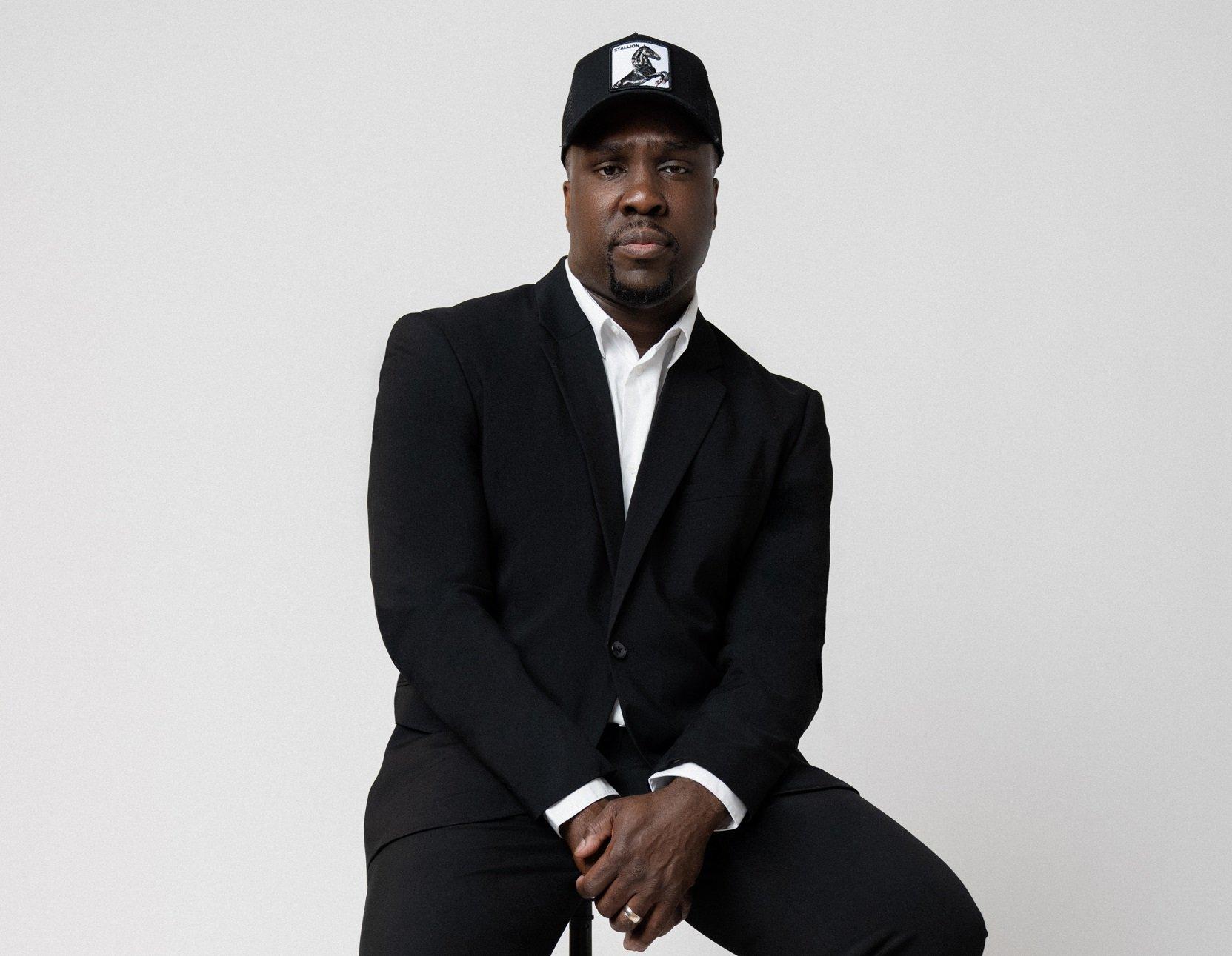
Photo: Oye Diran
interview
Meet Derrick Hodge, The Composer Orchestrating Hip-Hop's Symphony
From Nas' 'Illmatic' to modern hip-hop symphonies, Derrick Hodge seamlessly bridges the worlds of classical and hip-hop music, bringing orchestral elegance to iconic rap anthems.
Over the last 50 years, hip-hop culture has shown it can catalyze trends in fashion and music across numerous styles and genres, from streetwear to classical music. On June 30, Nas took his place at Red Rocks Amphitheater in a full tuxedo, blending the worlds of hip-hop and Black Tie once again, with the help of Derrick Hodge.
On this warm summer eve in Morrison, Colorado, Nas performed his opus, Illmatic, with Hodge conducting the Colorado Symphony Orchestra. The show marked a belated 30-year celebration of the album, originally released on April 19, 1994.
As Nas delivered his icy rhymes on classics like "N.Y. State of Mind," "Memory Lane (Sittin' in da Park)," and "Halftime," the orchestra held down the beat with a wave of Hodge's baton. The winds, strings, and percussion seamlessly transitioned from underscoring Nas's lyrics with sweeping harmonic layers to leading melodic orchestral flourishes and interludes. For the album's final track, "Ain't Hard to Tell," the orchestra expanded on Michael Jackson's "Human Nature," expertly sampled originally by producer Large Professor.
Derrick Hodge is a pivotal figure in modern music. His career spans writing and performing the famous bassline on Common's "Be," composing for Spike Lee's HBO documentary "When the Levees Broke: A Requiem in Four Acts," and his own solo career that includes his latest experimental jazz album, COLOR OF NOIZE. Hodge also made history by bringing hip-hop to the Kennedy Center with orchestra accompaniments for Illmatic to celebrate the album's 20th anniversary in 2014.
"That was the first time hip-hop was accepted in those walls," Hodge says sitting backstage at Red Rocks. It was also the first time Hodge composed orchestral accompaniments to a hip-hop album.
Since then, Hodge has composed symphonic works for other rappers including Jeezy and Common, and is set to deliver a symphonic rendition of Anderson .Paak's 2016 album, Malibu, at the Hollywood Bowl in September.
Hodge's passion for orchestral composition began when he was very young. He played upright bass by age seven and continued to practice classical composition in his spare moments while touring as a bassist with Terence Blanchard and Robert Glasper. On planes. In dressing rooms. In the van to and from the gig.
"It started as a dream. I didn't know how it was going to be realized. My only way to pursue that dream was just to do it without an opportunity in sight," Hodge says. "Who would've known that all that time people were watching? Friends were watching and word-of-mouth."
His dedication and word-of-mouth reputation eventually led Nas to entrust him with the orchestral arrangements for Illmatic. He asked Hodge and another arranger, Tim Davies, to write for the performance at the Kennedy Center.
"[Nas] didn't know much about me at all," Hodge says. "For him to trust how I was going to paint that story for an album that is very important to him and important to the culture, I have not taken that for granted."
Read more: How 'Illmatic' Defined East Coast Rap: Nas’ Landmark Debut Turns 30
Those parts Hodge wrote for the Kennedy Center are the same parts he conducted at Red Rocks. Over a decade later, he channels the same drive and hunger he had when he was practicing his compositions between gigs. "I hope that I never let go of that. I feel like these opportunities keep coming because I'm approaching each one with that conviction. Like this could be my last."
Before this latest performance, GRAMMY.com spoke with Hodge about bridging the worlds of classical and hip-hop, influencing the next generation of classical musicians, and how his experience as a bassist helps him lead an orchestra.
Throughout history, orchestral music has been celebrated by the highest echelons of society, whereas hip-hop has often been shunned by that echelon. What is it like for you to bring those two worlds together?
I love it. I've embraced the opportunity since day one. I was a young man showing up with Timberlands on and cornrows in my hair, and I knew the tendency to act and move in a certain perception was there. I knew then I have to represent hope in everything I do. I choose to this day to walk with a certain pair of blinders on because I feel like it's necessary. Because of that I never worry about how the classical world perceives me.
Oftentimes I'll stand before them and I know there may be questions but the love I show them, what I demand of them, and how I show appreciation when they take the music seriously…almost every situation has led to lifelong friendships.
I believe that's been part of my purpose. It's not even been to change minds or change perceptions. In serving the moment, even when people have preconceptions, they're in front of me playing music I wrote. How do I serve them best? How do I bring out the best in them just like I'm trying to bring out the best in the storyline of a hip-hop artist that may not relate to their story at all? The answer is just to be selfless. That's eliminated the distraction of trying to convince minds.
With that unifying principle, would you consider conducting the orchestra the same thing as playing bass with Robert Glasper?
The way I try to be selfless and serve the moment, it's no different. Maybe the skillset that's required. For example, conducting or working within a framework of composed music requires a certain way of making sure everybody's on the same page so we can get through these things on time and keep going. But I serve that moment no differently than when myself and Robert Glasper, Chris Dave, Casey Benjamin RIP, are creating a song in the moment.
I actually don't even think about how one thing is affecting the other. I will say the beauty of the bass and the bassists that have influenced me — from Ron Carter to the great Marcus Miller, Victor Wooten — is the way they can stand out while never abandoning the emotion of the moment. Remembering what is perceived as the role of the bass and how it glues things in a unique way. Harmonically and rhythmically. Being aware of the responsibility of being aware of everything.
I think that's one thing that's carried over to orchestrating and thinking about balances and how to convey emotion. I think some things are innate with bassists. We're always navigating through harmony and having a conversation through a lens of placement with drums. Placement with the diction if they're singers or rappers. There are a lot of decisions bass players are making in the moment that we don't even think about. It's just secondhand. But it's how are we serving what's necessary to make the conversation unified. I think that's one thing that's served me well in composition.
What's one song you're particularly excited to dive into for the Anderson .Paak arrangements?
So I'm intentionally not thinking in that way because we decided to treat it like a movie. Start to finish no matter what. With that in mind, I'm trying to approach it as if the whole thing is an arcing story because I didn't realize the succession of how he placed that record was really important to him.
**Hip-hop is often a very minimalist genre while an orchestra is frequently the opposite with dozens of instruments. How do you maintain that minimalist feel when writing orchestra parts for hip-hop albums like Illmatic?**
I'm so glad you asked that because that was the biggest overarching thing I had to deal with on the first one. With Nas. Because Illmatic, people love that as it is. Every little thing. It wasn't just the production. Nas's diction in between it, how he wrote it, how he told the story, and the pace he spoke through it. That's what made it. So the biggest thing is how do I honor that but also try to tell the story that honors the narrative of symphonic works? [The orchestra is] fully involved. How do I do things in a way where they are engaged without forcing them?
Illmatic was a part of my soundtrack. So I started with the song that meant the most to me at that time: "The World is Yours." That was the first piece I finished, and I emailed Pete Rock and asked "How is this feeling to you?" If the spirit of the song is speaking to him then I feel like this is something I can give to the people no matter how I feel about it. And he gave the thumbs up.
So instead of overly trying to prove a point within the flow of the lyrics, how do we pick those moments when the orchestra is exposed? Let them be fully exposed. Let them tell a story leading into that. Make what they do best marry well into what Nas and the spirit of hip-hop and hip-hop sampling do best. And then let there be a dance in between.
That first [Illmatic] show was a great experiment for me. I try to carve out moments whenever I can. Let me figure out what's a story that can combine this moment with this moment. That's become the beauty. Especially within the rap genre. To let something new that they're not familiar with lead into this story.
*Derrick Hodge conducts the Colorado Symphony Orchestra at Red Rocks* | Amanda Tipton
The orchestra is just as excited to play it as Nas is to have them behind him.
And that reflects my story. I try to dedicate more time to thinking about that, and that normally ends up reciprocated back in the way they're phrasing. In the way they're honoring the bowings. In the way they're honoring the breaths that I wrote in for them. They start to honor that in a way because they know we're coming to try and have a conversation with these orchestras. That's one thing I try to make sure no matter what. It's a conversation and that goes back to the moment as well.
I've seen other composers put an orchestral touch on hip-hop in recent years. For example, Miguel Atwood-Ferguson wrote orchestral parts to celebrate Biggie's 50th birthday. Would you say integrating an orchestra into hip-hop is becoming more popular?
It has become popular, especially in terms of catching the eyes of a lot of the different symphonies that might not have opened up their doors to that as frequently in the past. These opportunities — I appreciate the love shown where my name is mentioned in terms of the inception of things. But I approach it with a lot of gratitude because others were doing it and were willing to honor the music the same. There are many that wish they had that opportunity so I try to represent them.
With these more modern applications of orchestral music, I feel like there will be an explosion of talent within the classical realm in the next few years. Kids will think it's cool to play classical again.
The possibility of that just brings joy to me. Not just because it's a spark, but hopefully the feeling in the music they relate to. Hopefully there is something in it, aside from seeing it done, that feels that it relates to their story. I have confidence if I'm true to myself, hopefully, each time in the music it's going to feel like it's something relevant to the people. The more I can help foster platforms where people are free to be themselves, and where they can honor the music—I hope that mentality becomes infectious.
More Rap News

Ice Spice Is The Drill Queen On 'Y2K!': 5 Takeaways From Her Debut Album

Watch Young MC Win Best Rap Performance In 1990
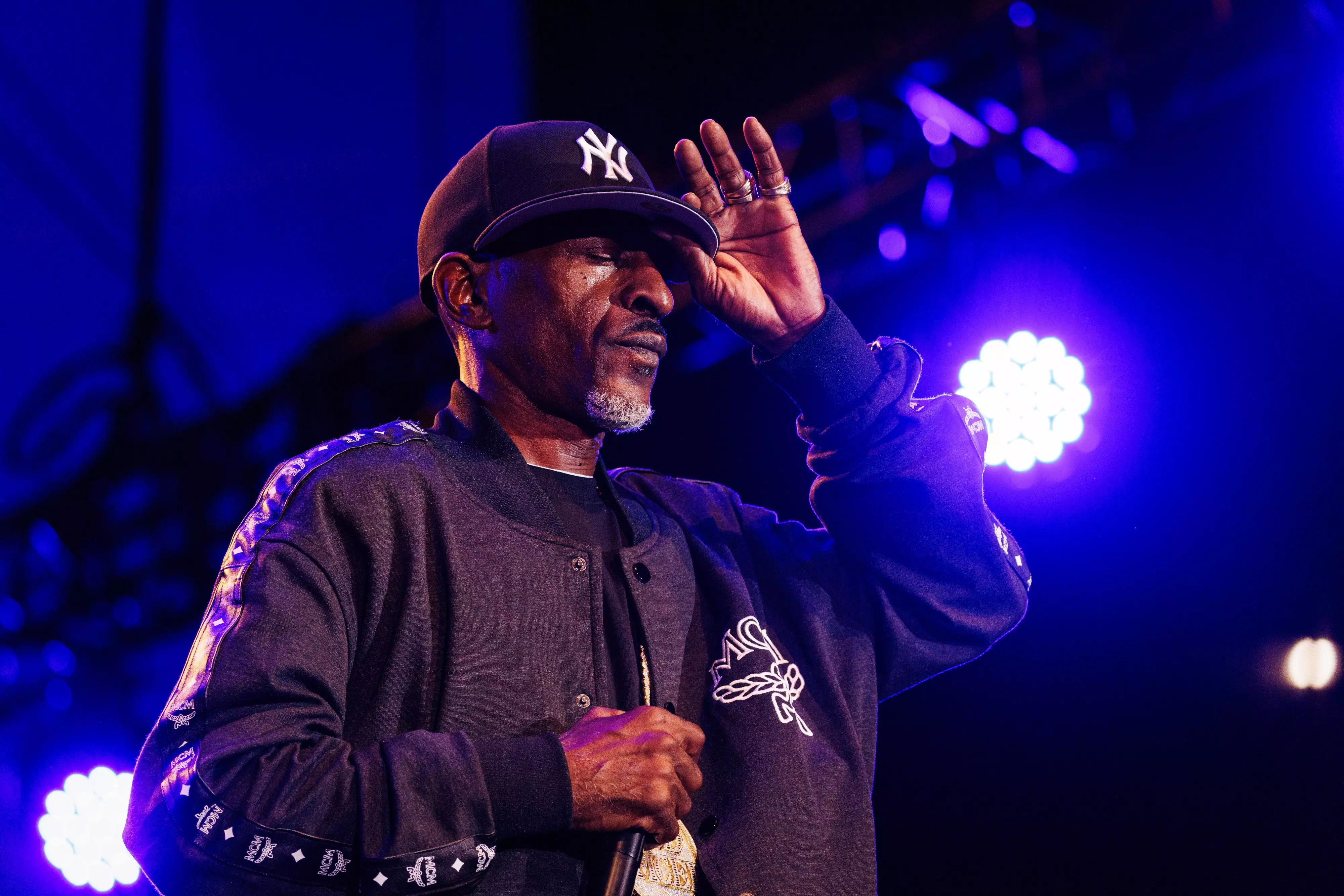
On Rakim's 'G.O.D's Network (REB7RTH)' The MC Turned Producer Continues His Legacy With An All-Star Cast
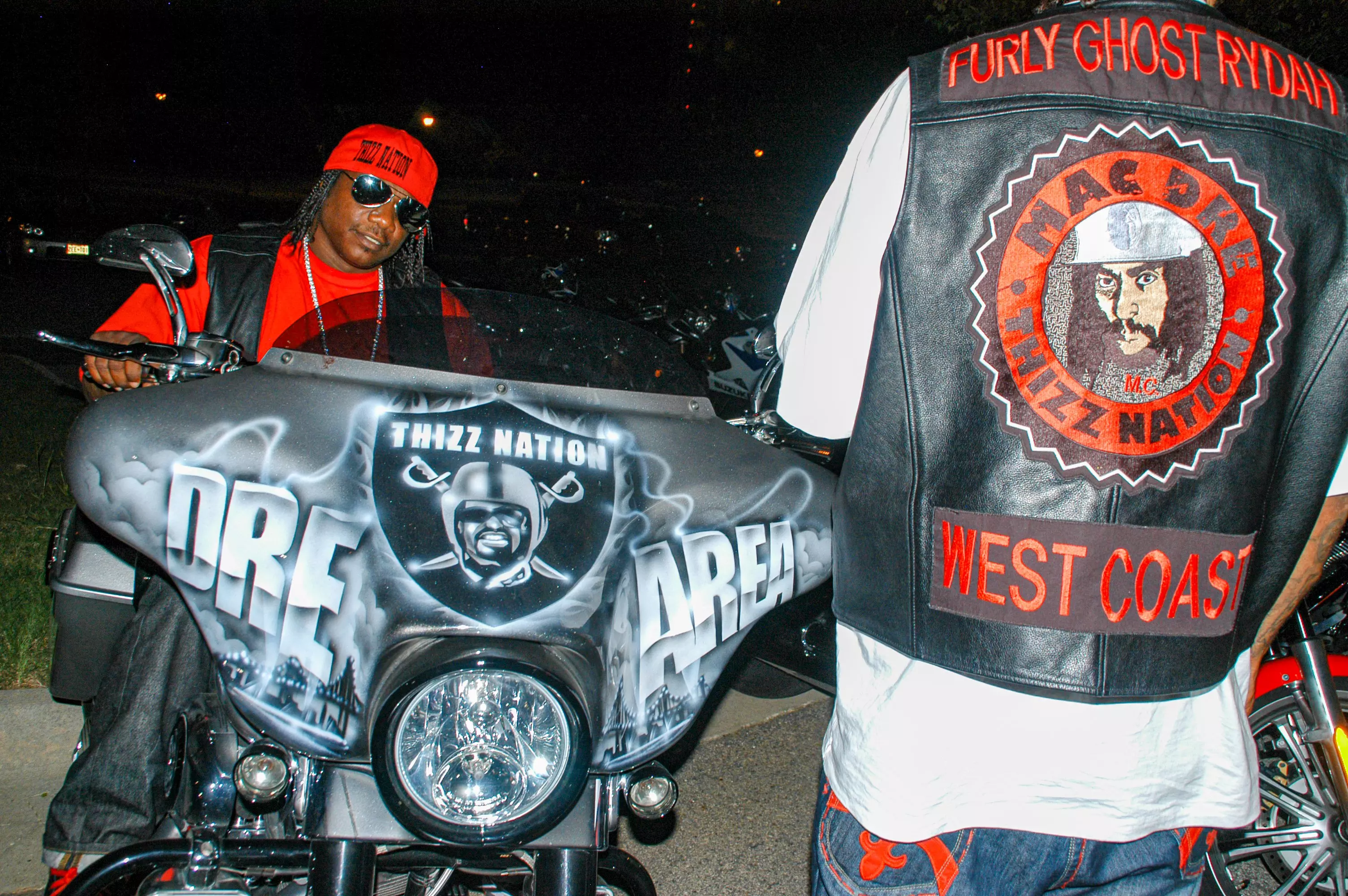
5 Ways Mac Dre's Final Living Albums Shaped Bay Area Rap
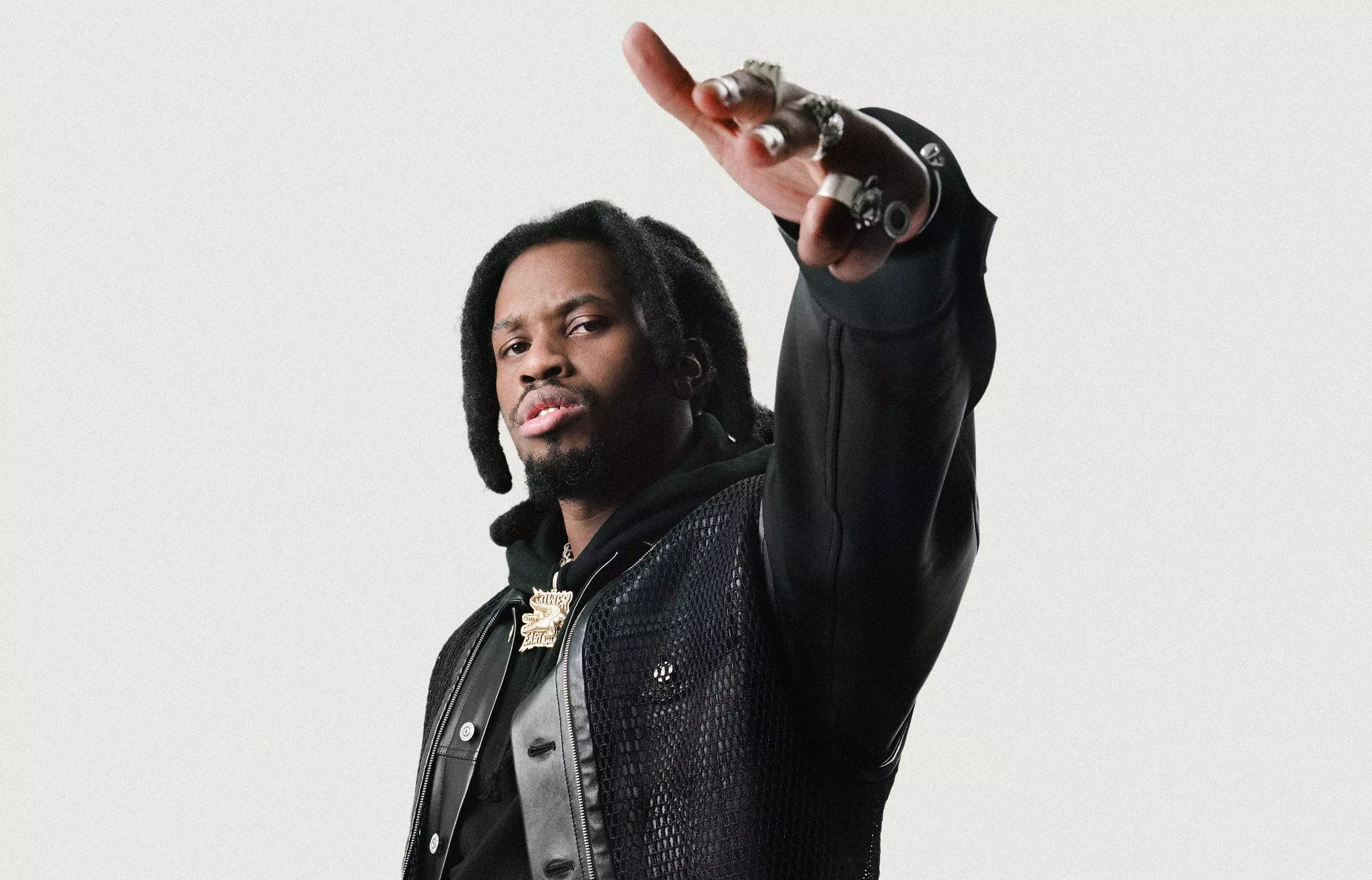
Denzel Curry Returns To The Mischievous South: "I've Been Trying To Do This For The Longest"

Photo: Amy Lee
list
5 Rising L.A. Rappers To Know: Jayson Cash, 310babii & More
From San Diego to the Bay Area, Seattle and beyond, the West Coast bursts with talent. Los Angeles is at the heart of this expanse, and these five rappers are just a few who are showcasing the vibrant sounds of West Coast hip-hop.
GRAMMY winners Kendrick Lamar and Mustard have long repped their California roots. Earlier this summer, their powerhouse anthem "Not Like Us" brought West Coast rap back to its roots and shone a global spotlight on the scene.
Lamar and Mustard are at the forefront of a renaissance in West Coast rap. Their shared roots in Southern California cities — Mustard from Los Angeles and Kendrick from Compton — adds authenticity and resonance to their partnership. Their undeniable chemistry was on display in the video for "Not Like Us," which received a million views less than an hour after its release.
Mustard's signature beats and Lamar's profound lyricism has resurfaced the sound and culture that makes West Coast rap so unique and paved the way for a new generation of artists. All signs suggest that another impactful collaboration may appear on Mustard's upcoming album, Faith of A Mustard Seed.
Learn more: A Guide To Southern California Hip-Hop: Definitive Releases, Artists & Subgenres From L.A. & Beyond
Kendrick Lamar headlined the electrifying Pop Out concert on Juneteenth, which also featured sets from Mustard and DJ Hed. The event saw a handful of L.A. rappers, opening for Lamar in a showcase of the vibrant talent that defines the region's rap scene.
The West Coast is a vast reservoir of talent, stretching from the Bay Area to Seattle. At the heart of this creative expanse is Los Angeles, which brings fresh perspectives, innovative styles, and renewed energy to hip-hop, ensuring the genre thrives. With the stage set for these newcomers to shine, it's the perfect time to take a closer look at some of the rising talents poised to impact the rap scene. While this list only scratches the surface, it offers a glimpse into the diverse and exciting talent from SoCal, the epicenter of the West.
Blxst
Arising from Los Angeles, Blxst initially played the background as a producer but soon demonstrated his ability to excel across all facets of music creation. Blxst's breakout moment came with his platinum-certified single "Chosen," which solidified his place in the music industry. His collaboration on Kendrick Lamar's "Die Hard" from Mr. Morale And The Big Steppers further showcased his skill for crafting hooks that elevate tracks, resulting in two GRAMMY nominations.
As he prepares to release his debut album, I'll Always Come Find You on July 19, Blxst stands at a pivotal point in his career. With a great resume already to his name, his forthcoming album promises to showcase his undeniable talent and leave a lasting impact on the West Coast music scene.
Bino Rideaux
Bino Rideaux is a South Central native and frequent collaborator with the GRAMMY-winning rapper Nipsey Hussle. He is the only artist to have a joint project with Hussle, No Pressure, released before the prolific rapper's untimely death. Rideaux has hinted at having a treasure of unreleased music with Hussle, saved for the perfect moment and album.
Rideaux is known for creating tracks that get the city outside and dancing. He has made three beloved projects with Blxst, titled Sixtape, Sixtape 2, and Sixtape 3 resulting in sold-out shows and a special place in West Coast Rap fans' hearts. Endorsed by industry heavyweights like Young Thug, Rideaux continues to carve his path at his own pace. His journey is nothing short of a marathon, echoing the enduring legacy of his mentor.
Kalan.FrFr
Kalan.FrFr, whose name stands for "For Real For Real," is an artist whose music is as genuine as his name suggests. Growing up in Compton and Carson, Kalan.FrFr has always stayed true to his roots, and exudes the unyielding confidence essential to making it in the City of Angels.
His breakthrough mixtape, TwoFr, showcased his ability to shine without major features, delivering verses with catchy hooks and melodic rap. He's shown he's not confined to one sound, delivering vulnerable tracks like "Going Through Things'' and "Never Lose You." His EP Make the West Great Again, Kalan.FrFr both proves his loyalty to his origins and highlights his versatility. Kalan.FrFr's signature punch-in, no-writing-lyrics-down style keeps his fans on their toes, ensuring that whatever comes next is unpredictable but authentic.
Jayson Cash
Jayson Cash, a rapper hailing from Carson — the same city as TDE artist Ab-Soul — stays true to West Coast rap, from his lyrics to his beat selection. Listening to Jayson Cash's music is like diving into a vivid life narrative. His prowess as a lyricist and storyteller shines through in every verse. He gives his fans an insight into his journey, making it a relatable music experience.
Cash made waves with his debut mixtape, Read The Room, and scored a Mustard beat on the song "Top Down." Two years later, their collaboration continues, with Cash writing on Mustard's upcoming album. Though often seen as an underdog, Cash is not to be underestimated, earning cosigns from West Coast legends like Suga Free and Snoop Dogg. His latest project, Alright Bet, includes a notable feature from Dom Kennedy.
310babii
310babii has achieved platinum-selling status at just 18 years old, while successfully graduating high school. Yet 310babii's career began in seventh grade, when he recording songs on his phone showing early signs of motivation and creativity. His 2023 breakout hit "Soak City (Do It)" quickly gained traction on TikTok — and caught the ears of Travis Scott and NFL player CJ Stroud.
As the song grew in popularity, it led to a remix produced by Mustard, who invited the Inglewood native to join him onstage during his set at The Pop Out. 310babii's innovative spirit shines through in his distinctive visuals, exemplified by the captivating video for his song "Back It Up." His recent debut album, Nights and Weekends, released in February, underscores his evolving talent and promise within the music industry.
Latest News & Exclusive Videos

2024 Paris Olympics Opening Ceremony: Watch Celine Dion, Lady Gaga, Gojira & More Perform

Ice Spice Is The Drill Queen On 'Y2K!': 5 Takeaways From Her Debut Album

New Music Friday: Listen To New Songs From Halsey, MGK And Jelly Roll, XG & More

Watch Young MC Win Best Rap Performance In 1990

The Red Clay Strays Offer A New Kind Of Religion With 'Made By These Moments'

Photo: Matt Winkelmeyer
list
New Music Friday: Listen To New Songs From Ice Spice, Ariana Grande, Post Malone, Coldplay & More
As we slip into summer, get the season started by listening to these new songs, albums and collaborations from Gracie Abrams, Kygo, The Joy and more that dropped on June 21.
The first New Music Friday of the summer delivers us fresh jams packed with exciting collaborations and debuts.
This week features releases from big name, genre-crossing collaborations, including Ariana Grande's remix of "the boy is mine" with Brandy and Monica, and Post Malone teaming up with Blake Shelton on their new track "Pour Me a Drink." As you build your new summer playlist, make sure you don't miss out on these ten must-hear tunes.
Ice Spice — "Phat Butt"
After a massive year with the release of her EP Like..? and four nominations at the 2024 GRAMMYs, Ice Spice is ready to level up once again with her newest single, "Phat Butt." With self-assured lyricism on top of a classic drill beat that is true to her sound, the track serves as the second single to be released from her debut album, Y2K!. "Phat Butt" comes as both a message to those who lacked belief in Ice Spice’s music career, but also as a quintessential summer anthem.
In the self-directed music video, the rapper is shown performing in front of a wall of graffiti with grainy video filters, emphasizing the Y2K feel. Ice Spice is set to take on her Y2K World Tour next month and it's no doubt that this "Phat Butt" will be a highlight on her setlist.
Explore More: The Rise Of Ice Spice: How The "Barbie World" Rapper Turned Viral Moments Into A Full-On Franchise
Ariana Grande, Brandy, & Monica — "the boy is mine (remix)"
When asking different groups who sings the song "the boy is mine," you're likely to get two answers. Some will say pop star Ariana Grande, while others will think of the original 1998 R&B hit by Brandy and Monica, which won the GRAMMY for Best R&B Performance By A Duo Or Group With Vocal in 1999. Doubling down on the shared name of the track and bridging the generational gap among music lovers, Grande, Brandy, and Monica have come together for a fresh remix of "the boy is mine," and the internet couldn't be more ecstatic.
"My deepest and sincerest thank you to Brandy and Monica, not only for joining me for this moment, but for your generosity, your kindness, and for the countless ways in which you have inspired me," said Grande in an Instagram post announcing the collaboration. "This is in celebration of you both and the impact that you have had on every vocalist, vocal producer, musician, artist that is creating today."
Read More: 5 Takeaways From Ariana Grande's New Album Eternal Sunshine
Post Malone & Blake Shelton — "Pour Me a Drink"
Post Malone has been dipping his toes into the country genre for some time now and fans have been anxiously awaiting his promised western era post Cowboy Carter.
Malone and Shelton first ignited excitement with a sneak peek of their song, "Pour Me a Drink" at the CMA Fest earlier this month. Since Posty announced the official release on Instagram, fans have eagerly awaited its arrival on streaming services. The track serves as a tantalizing preview of Post Malone's upcoming country album, F-1 Trillion, coming August 16.
Read More: Post Malone's Country Roots: 8 Key Moments In Covers and Collaborations
Coldplay — "feelslikeimfallinginlove"
Coldplay has been generating excitement as they embark on their next chapter, with the release of their latest single, "feelslikeimfallinginlove." Over the past few weeks, they've been feeding fans with sneak peeks on social media and performing the song live on their world tour.
The track sets the stage for the release of Coldplay's highly anticipated tenth studio album, Moon Music, set to land in early October. True to their brand, this song is geared to uplift your spirits, making it the perfect anthem for carefree summer car rides with the windows down.
Read More: How Coldplay's Parachutes Ushered In A New Wave Of Mild-Mannered Guitar Bands
Kygo — 'Kygo'
Ten years into his career, Norwegian DJ Kygo is dropping his self-titled album, Kygo, which he teased last week with the single "Me Before You" featuring Plested. The song, backed by a thumping mid-tempo instrumental, vividly narrates the transformative experience of being deeply influenced by someone in a relationship and not wanting to return to who you were before. The 18-track project features diverse and vibrant collaborations with unexpected guests like the Jonas Brothers and Ava Max.
Maren Morris & Julia Michaels — "cut!"
Maren Morris and Julia Michaels, GRAMMY-winners both independently renowned for their iconic music collaborations, are now joining forces to release their electrifying new track, "cut!" The duo has been working together for a few years, with Michaels' co-writing Morris' "Circles Around Town," which received a nomination for Best Country Song at the 2023 GRAMMYs. So, while this collaboration might not come as a surprise, it is still certainly a welcomed one.
After a two-year hiatus from releasing music, pop enthusiasts have been eagerly anticipating Morris' return to the spotlight. "Can't wait to cathartically scream f*ck at the top of our lungs together," Morris said in an Instagram post announcing the track.
Learn More: Behind Julia Michaels' Hits: From Working With Britney & Bieber To Writing For Wish
Gracie Abrams — 'The Secret of Us'
Building on the success of her debut album, Good Riddance, and the skyrocketing momentum of her career after opening The Eras Tour, California-native Gracie Abrams has unveiled her much-anticipated sophomore album, The Secret of Us.
The album includes the track, "Close to You," which was released ahead of the album drop as the full realization of a 20-second snippet that Abrams posted on Instagram back in 2018. After sitting on the track for six years and relentless pleas from fans, the pop artist finally delivered the full song — a mesmerizing blend of Abrams’ vocal prowess and heartfelt lyricism.
Learn More: How Making Good Riddance Helped Gracie Abrams Surrender To Change And Lean Into The Present
6LACK — "F**k The Rap Game"
6LACK is rebranding himself and making sure everyone knows. The release of his newest track, "F**k The Rap Game" addresses the phenomenon of getting caught up in the glitz and glamor of the entertainment business, tying in the importance of staying true to one's roots. The Atlanta-raised artist is currently on tour with rapper Russ, with whom he recently released the single "Workin On Me,” another nod to 6LACK's ongoing mission of self-reflection and deep introspection.
“A better me equals a better you equals a better us. That’s been the formula of my life. I can’t thrive unless I’m around people who are constantly trying to better themselves as individuals,” 6LACK said in an interview with GRAMMY.com last year. “It took a second of me really looking at myself in the mirror, being honest and saying: I am not doing as much work on myself as I claim to be doing and want to be doing on myself.”
Read More: 6lack On His Comeback Album SIHAL: "I’m Playing A Different Game"
The Joy — 'The Joy'
Months after their buzzworthy performance with Doja Cat at Coachella, South African quintet The Joy has released their self-titled album through Transgressive Records. The album was recorded live, in real time, at Church Studios in London and features no instruments or overdubs — just pure, raw vocals that capture the group's authentic sound.
The Joy came together through a serendipitous twist of fate. Years back, five boys arrived early to their school choir practice and decided to have an impromptu jam session. Realizing their undeniable musical chemistry, The Joy was born, quickly garnering global acclaim. "They are, like, my favorite group," Jennifer Hudson exclaimed on her talk show.
Surfaces — 'good morning'
Known for their feel-good tunes that took over TikTok in 2019, Surfaces presents their sixth album, Good Morning. In tracks like, “Real Estate,” the band chronicles the idea of exploring one’s mind and thoughts, above all other features, backed by a tropical lo-fi instrumental, as well as a steady thump of a bass, and trilling trumpets.
“’Real Estate’ is about the infatuation with that place in someone’s mind that you can’t get enough of,” Surfaces explained in a press statement. “It’s a familiar place to call home that feels safe and deserves all the love in the world. We wanted to capture the bliss of finding that space and reveling in it.”
Lauren Watkins — 'The Heartbroken Record'
Lauren Watkins has a packed summer schedule, which includes opening for country artist Morgan Wallen and releasing her second studio album, The Heartbroken Record. This project draws inspiration from music industry veterans like Willie Nelson and Waylon Jennings, while also infusing influences from contemporary artists like Kacey Musgraves and Miranda Lambert. Each track from the album underscores stories of love and loss, woven together by the overarching theme of heartbreak.
"I didn't want to just put an album out — I wanted it to be purposeful," Watkins said in a press statement. "It's the past several years of my life, and that was just so much heartbreak and dramatic girl-feelings, but I think in a really deep and relatable way… and it just needs to get off my chest."
Why 2024 Is The Year Women In Country Music Will Finally Have Their Moment
